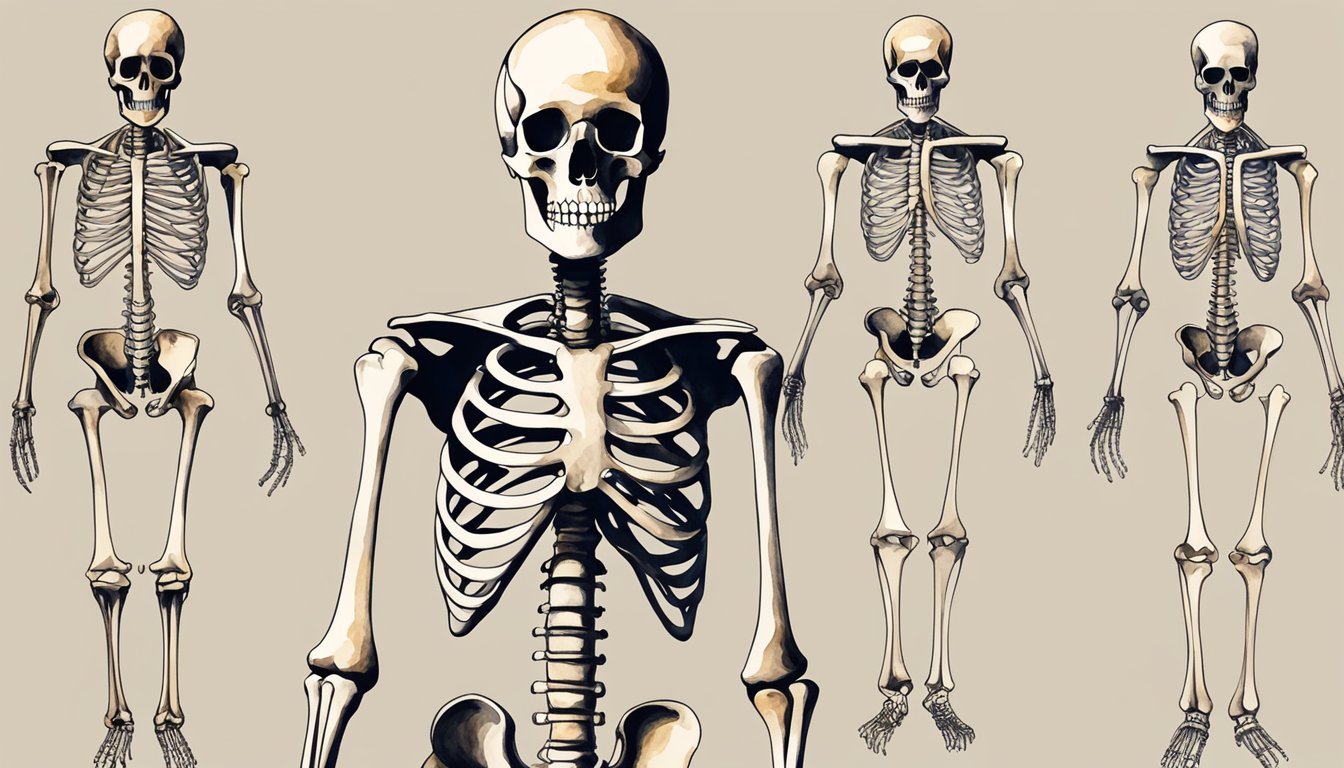Human Skeletal Overview

The human skeleton is a complex framework of bones that plays a significant role in providing structure, protecting organs, and allowing for mobility.
Anatomy of the Skeleton
The skeleton of an adult human comprises around 206 bones. These bones are distributed throughout two main regions: the axial skeleton, which includes the vertebral column, skull, rib cage, sternum, sacrum, and coccyx, and the appendicular skeleton, made up of the pelvis, limbs, scapula, and phalanges. The largest bone in the human body is the femur, while the smallest is the stapes bone in the middle ear.
Categories of Bones
Bones can be categorized based on their shape and function into long, short, flat, irregular, and sesamoid bones. Long bones, like the femur and humerus, act as levers to aid movement. Short bones, found in the wrist and ankle, provide stability with limited motion. The flat bones, such as the skull and rib cage, protect internal organs, and the irregular bones, including the vertebrae and pelvic bones, have various complex shapes to fulfill a myriad of functions. Lastly, sesamoid bones, like the patella, are embedded within tendons to reduce friction and modify pressure in muscles.
Functions and Health of Bones

Human bones play critical roles in the body not only by providing structure and rigidity but also by facilitating crucial biological functions. This section delves into the bones’ pivotal contributions to movement and support, their complex composition and the impact on health, and various conditions that can affect them.
Role in Movement and Support
Bones serve as the framework for the human body, giving it shape and the ability to stand upright. They work in tandem with muscles, joints, and ligaments to facilitate movement. The spine specifically supports the body’s weight and works with muscles of the back to maintain posture.
Bone Composition and Health
The health of bones is dependent on a rich composition that includes a matrix of collagen fibers and inorganic minerals like calcium and phosphorus, which provide strength and stiffness. Healthy bones constantly undergo remodeling, balancing bone formation and resorption. A sufficient intake of vitamins and minerals are essential for maintaining this balance.
Common Bone Conditions and Injuries
Bones are susceptible to various conditions such as osteoporosis, a condition where bones weaken and become more prone to fractures. Common injuries to bones include fractures and trauma, leading to visits to healthcare providers for treatment. Such treatments can range from immobilization with a cast to surgeries. Proper management of bone health and injuries is critical and can involve medication, physical therapy or lifestyle changes to prevent further issues.

